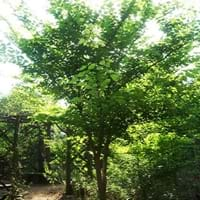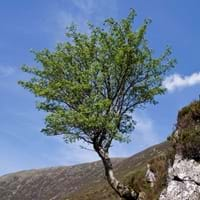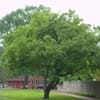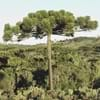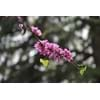Life Span
Perennial
Perennial
Origin
North America, Northeastern United States, Mid-Atlantic United States, North-Central United States, Central United States, South-Central United States, Canada
Asia, Europe, Northern Africa
Types
Not Available
Sorbus aucuparia fenenkiana, Sorbus aucuparia glabrata, Sorbus aucuparia praemorsa
Number of Varieties
Not Available
Habitat
Woodland Garden Canopy
Temperate Regions
USDA Hardiness Zone
3-11
3-7
Sunset Zone
Not Available
A1, A2, A3, 1a, 1b, 2a, 2b, 3a, 3b, 4, 5, 6, 7, 8, 9, 10, 14, 15, 16, 17
Habit
Upright/Erect
Oval or Rounded
Minimum Width
Not Available
Flower Color
Tan, Sandy Brown
White
Flower Color Modifier
Bicolor
Bicolor
Fruit Color
Green, Sandy Brown
Orange, Yellow
Leaf Color in Spring
Green
Green
Leaf Color in Summer
Green, Dark Green
Green
Leaf Color in Fall
Yellow, Green
Dark Green
Leaf Color in Winter
Not Available
Dark Green
Leaf Shape
oblong or obovate
Pinnate
Plant Season
Not Available
Spring, Fall
Sunlight
Full Sun, Partial Sun, Partial shade
Full Sun, Partial Sun
Growth Rate
Medium
Medium
Type of Soil
Clay, Loam, Sand
Clay, Loam, Sand
The pH of Soil
Neutral, Alkaline
Acidic, Neutral
Soil Drainage
Average
Average
Bloom Time
Early Spring, Spring
Late Spring
Tolerances
Not Available
Not Available
Where to Plant?
Ground
Ground
How to Plant?
Seedlings
Budding, Grafting, Stem Cutting
Plant Maintenance
Medium
Medium
Watering Requirements
Average Water Needs
Do Not over Water, Water in the early morning hours
In Summer
Lots of watering
Lots of watering
In Spring
Moderate
Moderate
In Winter
Average Water
Average Water
Soil pH
Neutral, Alkaline
Acidic, Neutral
Soil Type
Clay, Loam, Sand
Clay, Loam, Sand
Soil Drainage Capacity
Average
Average
Sun Exposure
Full Sun, Partial Sun, Partial shade
Full Sun, Partial Sun
Pruning
Remove damaged leaves, Remove dead branches, Remove dead leaves
Remove dead or diseased plant parts, Trim each shoot back to the first set of leaves
Fertilizers
Any balanced general purpose fertilizer
All-Purpose Liquid Fertilizer, Doesn't require fertilization when grown in rich soil
Pests and Diseases
Blackspot mold
Aphids, blister mites, Canker, fireblight, sawflies, Silver leaf
Plant Tolerance
Drought
Not Available
Flowers
Insignificant
Yes
Flower Petal Number
Not Available
Single
Showy Foliage
Insignificant
No
Foliage Texture
Medium
Fine
Foliage Sheen
Matte
Matte
Attracts
Beetles, Birds
Birds
Allergy
Miscarriage, Rash
Anxiety, Depression, High blood cholestrol, High blood pressure, Pain, Stress
Aesthetic Uses
Not Available
along a porch, deck or patio, Showy Purposes
Beauty Benefits
Beautiful Skin, Heals Damaged Hair, Strong, beautiful hair
Not Available
Environmental Uses
Air purification
Air purification, Food for birds, Shadow Tree
Medicinal Uses
Demulcent, Diuretic, Expectorant, Nutritive
Diarrhea, Inflammation, Laxative, Urinary tract problems, Vitamin C
Part of Plant Used
Fruits, Inner Bark, Leaves
Bark, Fruits, Wood
Other Uses
Chewed as a thirst quencher, Tea-like beverage can be brewed, Used as a thickener in soups, Used to make a twine
Used for its medicinal properties, Used for woodware
Used As Indoor Plant
No
No
Used As Outdoor Plant
Yes
Yes
Garden Design
Shade Trees
Feature Plant, Mixed Border, Topiary / Bonsai / Espalier
Botanical Name
ULMUS rubra
Sorbus aucuparia
Common Name
Slippery Elm
Rowan, Mountain ash
In Hindi
Slippery Elm
रोवाण पौधा
In German
Rotulme
Rowan Tree
In French
Slippery Elm
Rowan Tree
In Spanish
olmo resbaladizo
Rowan Tree
In Greek
Slippery Elm
Rowan Tree
In Portuguese
Slippery Elm
Árvore de Rowan
In Polish
Slippery Elm
Rowan Tree
In Latin
Lubricus Elm
Rowan ligno
Phylum
Magnoliophyta
Magnoliophyta
Class
Magnoliopsida
Magnoliopsida
Clade
Angiosperms, Eudicots, Rosids
Angiosperms, Eudicots, Rosids
Tribe
Not Available
Not Available
Subfamily
Not Available
Not Available
Number of Species
Not Available
Not Available
Season and Care of Slippery Elm and Rowan Tree
Season and care of Slippery Elm and Rowan Tree is important to know. While considering everything about Slippery Elm and Rowan Tree Care, growing season is an essential factor. Slippery Elm season is Not Available and Rowan Tree season is Not Available. The type of soil for Slippery Elm is Clay, Loam, Sand and for Rowan Tree is Clay, Loam, Sand while the PH of soil for Slippery Elm is Neutral, Alkaline and for Rowan Tree is Acidic, Neutral.
Slippery Elm and Rowan Tree Physical Information
Slippery Elm and Rowan Tree physical information is very important for comparison. Slippery Elm height is 1,830.00 cm and width Not Available whereas Rowan Tree height is 1,000.00 cm and width 800.00 cm. The color specification of Slippery Elm and Rowan Tree are as follows:
Slippery Elm flower color: Tan and Sandy Brown
Slippery Elm leaf color: Green
Rowan Tree flower color: White
- Rowan Tree leaf color: Green
Care of Slippery Elm and Rowan Tree
Care of Slippery Elm and Rowan Tree include pruning, fertilizers, watering etc. Slippery Elm pruning is done Remove damaged leaves, Remove dead branches and Remove dead leaves and Rowan Tree pruning is done Remove dead or diseased plant parts and Trim each shoot back to the first set of leaves. In summer Slippery Elm needs Lots of watering and in winter, it needs Average Water. Whereas, in summer Rowan Tree needs Lots of watering and in winter, it needs Average Water.
